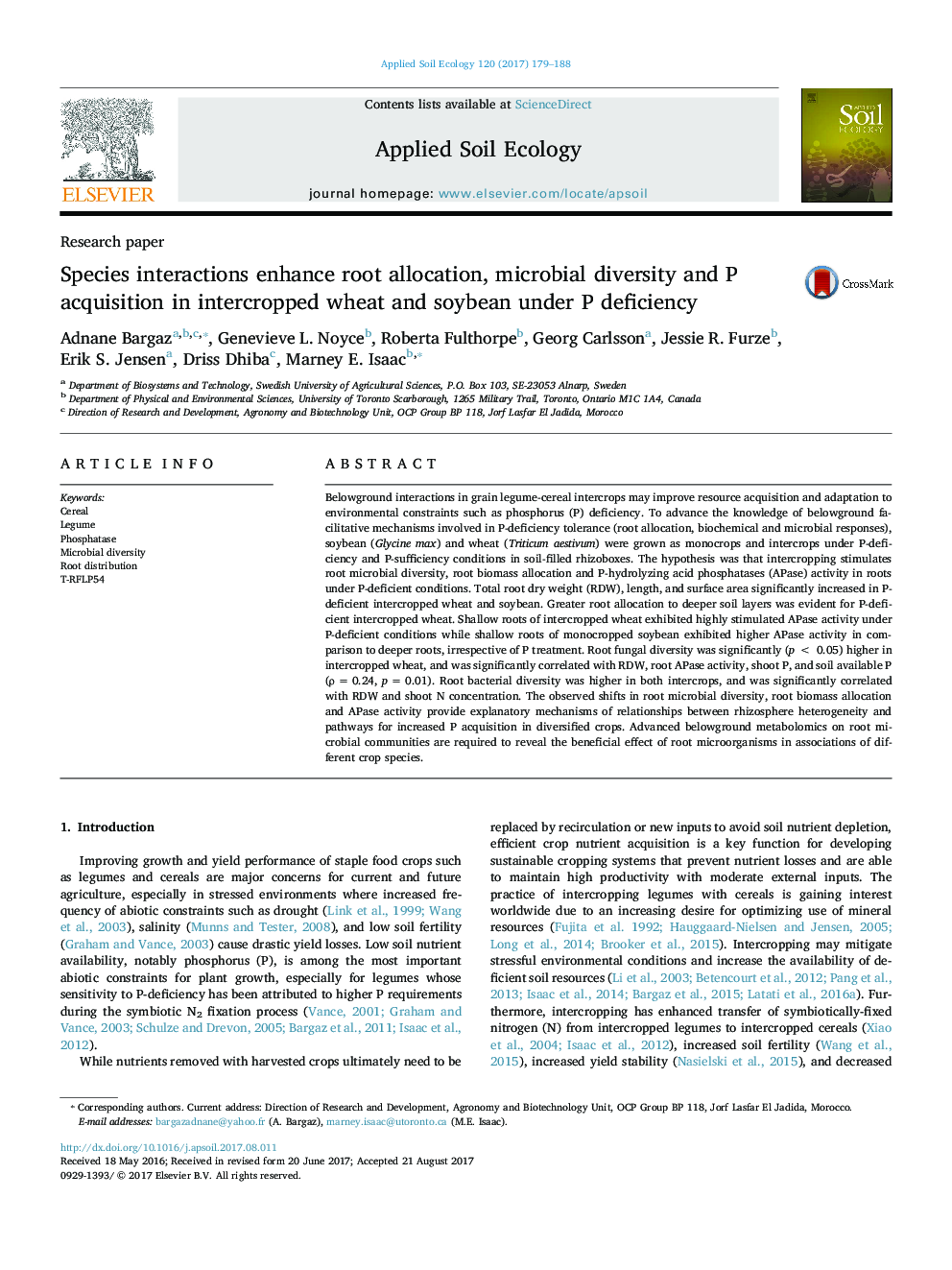| کد مقاله | کد نشریه | سال انتشار | مقاله انگلیسی | نسخه تمام متن |
|---|---|---|---|---|
| 5742586 | 1617764 | 2017 | 10 صفحه PDF | دانلود رایگان |
- Microbial diversity and rooting were studied in a P-limited legume-cereal intercrop.
- Intercropping induced shifts in root microbial diversity and root biomass allocation.
- Root fungal diversity correlated with root APase activity, shoot and soil P.
- Evidence is provided for alternate pathways for increased P-acquisition in intercrops.
- Optimizing belowground interactions in intercrops is paramount under nutrient stress.
Belowground interactions in grain legume-cereal intercrops may improve resource acquisition and adaptation to environmental constraints such as phosphorus (P) deficiency. To advance the knowledge of belowground facilitative mechanisms involved in P-deficiency tolerance (root allocation, biochemical and microbial responses), soybean (Glycine max) and wheat (Triticum aestivum) were grown as monocrops and intercrops under P-deficiency and P-sufficiency conditions in soil-filled rhizoboxes. The hypothesis was that intercropping stimulates root microbial diversity, root biomass allocation and P-hydrolyzing acid phosphatases (APase) activity in roots under P-deficient conditions. Total root dry weight (RDW), length, and surface area significantly increased in P-deficient intercropped wheat and soybean. Greater root allocation to deeper soil layers was evident for P-deficient intercropped wheat. Shallow roots of intercropped wheat exhibited highly stimulated APase activity under P-deficient conditions while shallow roots of monocropped soybean exhibited higher APase activity in comparison to deeper roots, irrespective of P treatment. Root fungal diversity was significantly (p < 0.05) higher in intercropped wheat, and was significantly correlated with RDW, root APase activity, shoot P, and soil available P (Ï = 0.24, p = 0.01). Root bacterial diversity was higher in both intercrops, and was significantly correlated with RDW and shoot N concentration. The observed shifts in root microbial diversity, root biomass allocation and APase activity provide explanatory mechanisms of relationships between rhizosphere heterogeneity and pathways for increased P acquisition in diversified crops. Advanced belowground metabolomics on root microbial communities are required to reveal the beneficial effect of root microorganisms in associations of different crop species.
Journal: Applied Soil Ecology - Volume 120, November 2017, Pages 179-188
